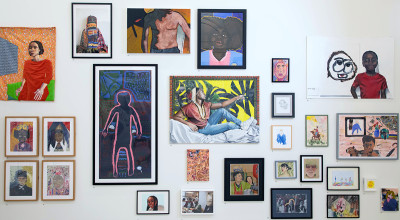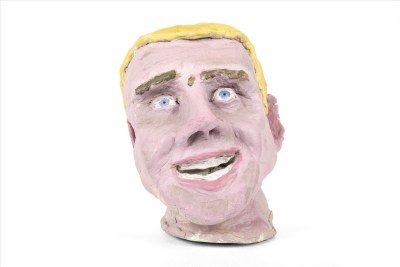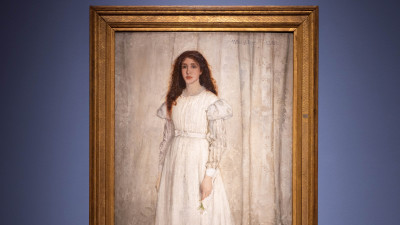Mary Moser and Angelica Kauffman: the RA’s founding women
Mary Moser and Angelica Kauffman: the RA’s founding women
International Women’s Day series
By Amy Bluett
Published 2 March 2021
Angelica Kauffman and Mary Moser were the only two female founders of the Royal Academy. Here, we take a closer look at their careers and the challenges they faced within the RA.
-
An earlier version of this article was published in 2015.
There are three key groups of women who have shaped the way the RA exists and operates today: the Members, RA Schools students and life models. Charting the progress of women within these three groups has revealed historical anecdotes about how their social ranking, education, reputation and risk-taking have aided their journey into the art world, and helps us to understand how their legacy continues today.
I’ve spent a lot of time in the RA Archive as part of my preparation for International Women’s Day, finding out more about the history of women within the context of the Academy. Our vast archival collection of manuscripts, photographs, minutes of meetings, letters and other documents offers an invaluable memory of the Academy’s membership and activities since its foundation in 1768.
It is no secret that, historically, women’s participation in the visual arts was marginalised in comparison to men, and women have been routinely excluded from art history. Often marriage and maintaining social status prevented women from fulfilling their ambitions as artists, and even if they did have the financial and independent means to pursue art as a career, academies often refused to admit them.
It is therefore remarkable that in 1768, we find two women among the founding Members at the Royal Academy: Angelica Kauffman and Mary Moser. Their inclusion in the engraving of Johann Zoffany’s The Royal Academy of Arts, 1771–2 (shown above), where they are depicted as wall paintings, not in person, raises questions about their role at the Academy. Did they have the ability to influence the progression of equality between male and female artists?
-

Angelica Kauffman RA, Self-portrait Personifying Painting, Engraved by Heinrich Sintzenich. Published by Heinrich Sintzenich, May 1783.

Mary Moser RA, Summer, ca. 1780.
-
Originally from Switzerland, Angelica Kauffman arrived in London in 1766. She had received more education than most young women of that time thanks to her artist father, Joseph Johann Kauffman, who was responsible for overseeing her artistic training. While in London, she executed two large portraits of female royals and a number of other portraits, including Self-portrait Personifying Painting.
For nobility in the 18th century, having a portrait painted by a talented young woman was very fashionable. Kauffman’s credentials as an artist were increasingly recognised by academies across Europe, and it was felt that in order for a British Academy to establish any kind of reputation, foreign expertise was needed. So in 1768, Kauffman joined 22 male artists in signing a petition to King George III for the establishment of a “Royal Academy for Painting and Sculpture”.
Joining Kauffman among the founding members was the painter Mary Moser, who had had equal difficulties finding formal artistic training, and as a result had received most of hers from her father, George Michael Moser. George Moser was the first Keeper of the Royal Academy, in addition to being a founding Member himself, so we are probably right to question how much influence his role had on Mary’s invitation to become a founding Member at the RA, but there is no doubt that she was a gifted artist, talented from an early age.
Mary Moser gained her artistic reputation as a flower painter and in the 1790s was commissioned by Queen Charlotte to design a complex floral decorative scheme for Frogmore House in Windsor. Her career as an artist continued throughout her marriage to Hugh Lloyd in 1793, until 1802 when it was said that her eyesight had become too poor to paint.
Although she rarely attended the meetings at the Academy, in 1807 she became a regular attendee to the General Assembly meetings, hinting either that the turn of the 19th century had created safer foundations for women to participate alongside men, or that Moser’s seniority among the Members at the Academy now accredited her with a little more authority. This was a time when the Academy itself was verging on a state of civil war and the question of gender wasn’t at the top of its agenda.
As women, Kauffman and Moser were prohibited from attending committee meetings and dinners which were, and in many ways continue to be, the main arenas of discussion that determine the direction of the Academy. However, their voices within the establishment were both active and influential. A letter sent by Kauffman to the President and Council in 1775 protests against the admission of Nathaniel Hone’s painting The Conjuror to the Summer Exhibition.
The painting, which is said to ridicule Kauffman’s alleged relationship with Reynolds, depicts Kauffman as a child leaning across Reynolds’s knee in front of a backdrop of prints, one of which shows naked figures dancing around St Paul’s Cathedral. In particular, it was thought that the naked woman in black stockings depicted in this print (which was subsequently painted over in the finished picture) was what really offended Kauffman. In her letter to the President and Council she writes:
-
-

Gentlemen!
I have had the honour of a visite from Sir Will. Chambers – the purpose of which was to reconcile me to submite to the exhibition of a picture which gave me offence, however I may admire the dignity of the gentlemen who are superior to the malignity of the author, I should have held their conduct much more in admiration, if they had taken into consideration a Respect to the sex which it is their glory to support.
If they fear the loss of an academician who pays no respect to that sex, I hope I may enjoy the liberty of leaving to them the pleasure of that academician and withdrawing one object who never willingly deserved his or their ridicule.
I beg leave to present my respects to the society and hope they will always regard their own honour. I have but one request to make, to send home my Pictures if that is to be exhibited.
Your most obedient servant, Angelica Kauffman.
-
-
As the result, The Conjurer was removed by the Royal Academy’s Hanging Committee, rejected on the grounds that it was offensive to one of its female members. It was a small win for Kauffman and it offers us a glimpse at some of the challenges women faced then, which arguably parallel many of the issues women continue to campaign for today.
Mary Moser’s death in 1819 marked the start of a long stretch of time when, despite no explicit ban, women remained excluded from the Academy for the next 168 years. Lady Elizabeth Butler, renowned at the time for her paintings that reported the realities of the Crimean War, came close to becoming a member in 1871 but according to committee reports, she missed out by a mere one vote. It wasn’t until 1936 that Dame Laura Knight became the next woman to be fully elected as an Academician. Even Knight faced a challenge; her work had been rejected by the Academy on the grounds that it embarrassed the art establishment with what a critic described as “vulgar” and “obviously an exercise” for a self-portrait. But Knight eventually helped pave the way for greater recognition of women in the arts and the continuation of female membership at the Academy.
Amy Bluett is the RA’s Events and Lectures Co-ordinator. With special thanks to the RA’s Archivist, Mark Pomeroy.






